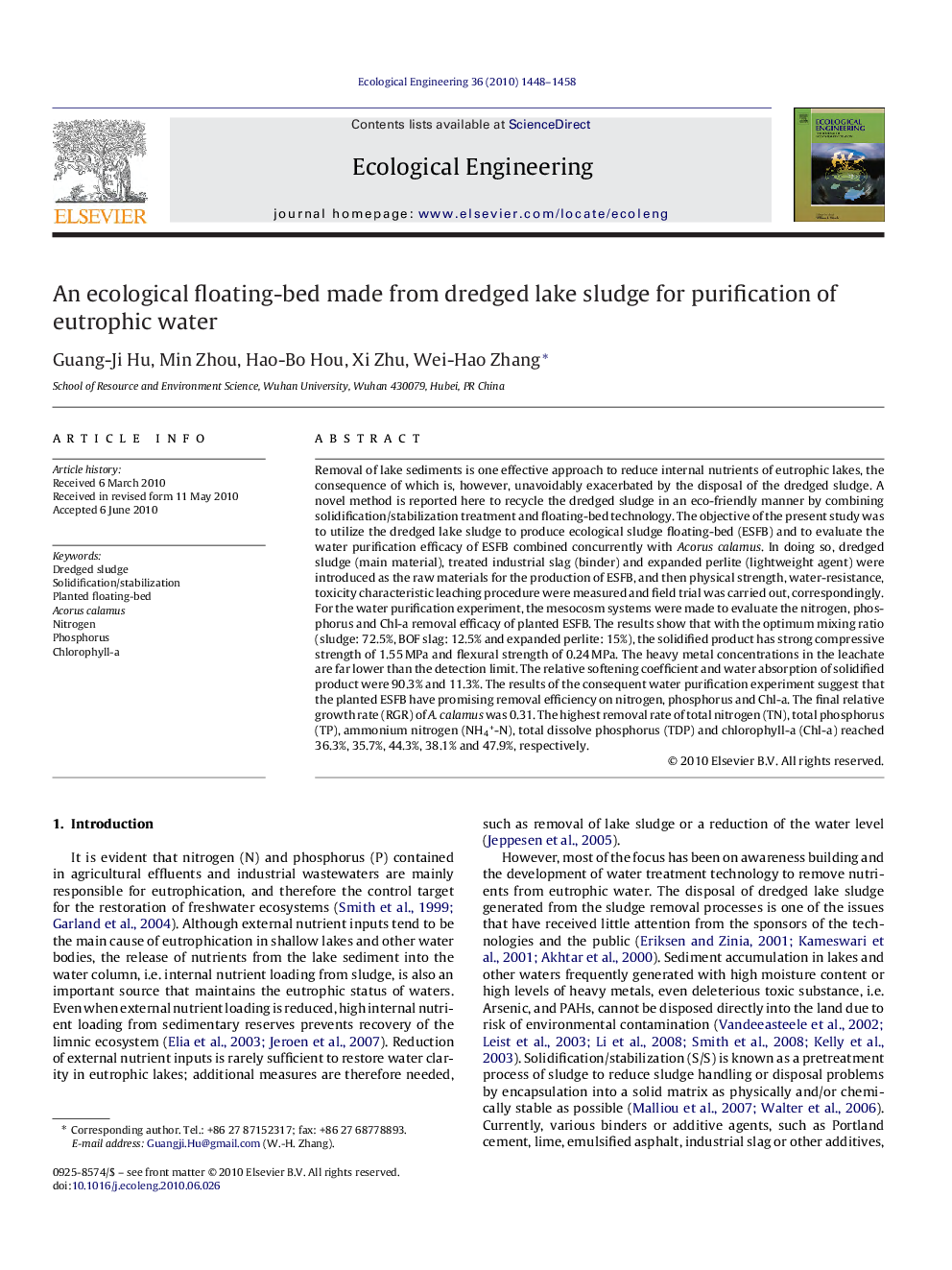| کد مقاله | کد نشریه | سال انتشار | مقاله انگلیسی | نسخه تمام متن |
|---|---|---|---|---|
| 4390595 | 1305181 | 2010 | 11 صفحه PDF | دانلود رایگان |

Removal of lake sediments is one effective approach to reduce internal nutrients of eutrophic lakes, the consequence of which is, however, unavoidably exacerbated by the disposal of the dredged sludge. A novel method is reported here to recycle the dredged sludge in an eco-friendly manner by combining solidification/stabilization treatment and floating-bed technology. The objective of the present study was to utilize the dredged lake sludge to produce ecological sludge floating-bed (ESFB) and to evaluate the water purification efficacy of ESFB combined concurrently with Acorus calamus. In doing so, dredged sludge (main material), treated industrial slag (binder) and expanded perlite (lightweight agent) were introduced as the raw materials for the production of ESFB, and then physical strength, water-resistance, toxicity characteristic leaching procedure were measured and field trial was carried out, correspondingly. For the water purification experiment, the mesocosm systems were made to evaluate the nitrogen, phosphorus and Chl-a removal efficacy of planted ESFB. The results show that with the optimum mixing ratio (sludge: 72.5%, BOF slag: 12.5% and expanded perlite: 15%), the solidified product has strong compressive strength of 1.55 MPa and flexural strength of 0.24 MPa. The heavy metal concentrations in the leachate are far lower than the detection limit. The relative softening coefficient and water absorption of solidified product were 90.3% and 11.3%. The results of the consequent water purification experiment suggest that the planted ESFB have promising removal efficiency on nitrogen, phosphorus and Chl-a. The final relative growth rate (RGR) of A. calamus was 0.31. The highest removal rate of total nitrogen (TN), total phosphorus (TP), ammonium nitrogen (NH4+-N), total dissolve phosphorus (TDP) and chlorophyll-a (Chl-a) reached 36.3%, 35.7%, 44.3%, 38.1% and 47.9%, respectively.
Journal: Ecological Engineering - Volume 36, Issue 10, October 2010, Pages 1448–1458